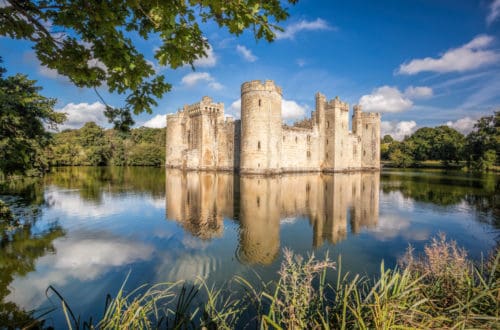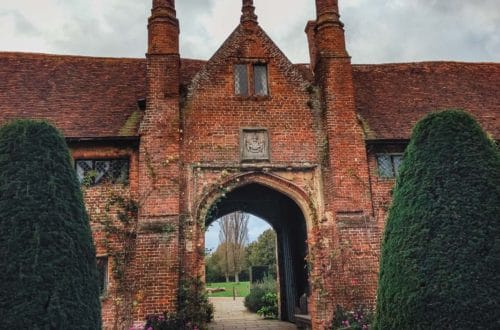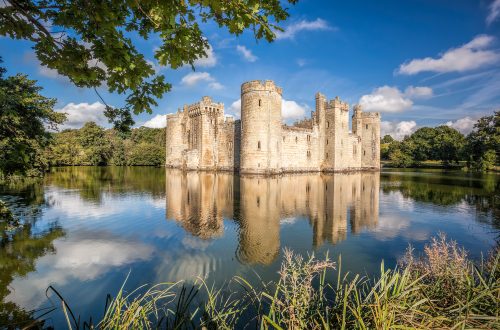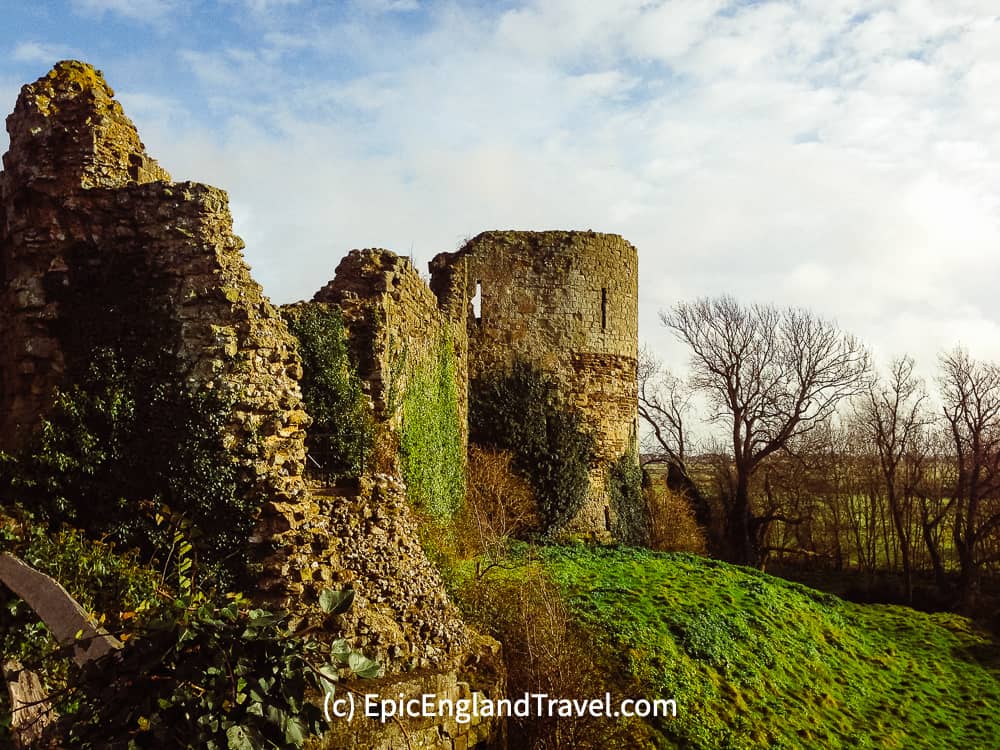
Why Visit Pevensey Castle in East Sussex (+7 Cool Pevensey Castle Facts)
With its austere and impressive ruins, Pevensey Castle is one of the most notable castles in East Sussex. The first Norman castle in England, Pevensey Castle history started as a Roman fort. Now protected by English Heritage, Pevensey Castle in East Sussex is fascinating site to visit. Among the various things to do in England as a culture vulture, you get both Roman and Norman history in this castle and a gorgeous pub in the adjacent village of Pevensey.
Contents
Pevensey Castle History
Pevensey Castle began as Anderida, a Roman fort thought to have been built around AD 290 built to guard the coast. The largest of the Roman forts built to guard the southern coast against raiders who came through the straits of Dover, most of Anderida’s history remains unknown. Some of the original walls still stand on the outside of the castle.
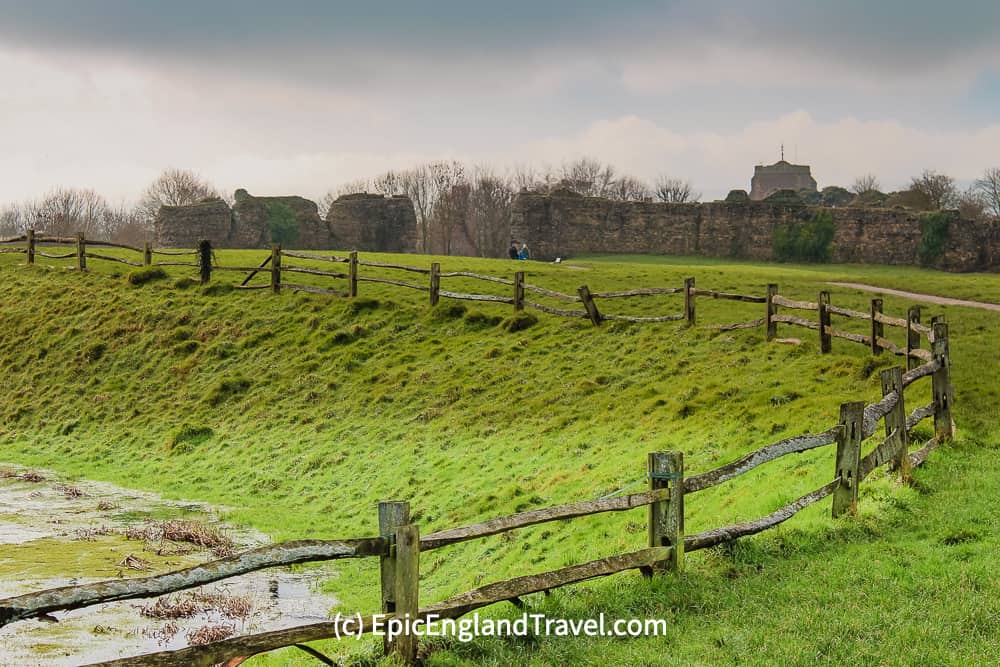
It is clear that the location of the fort was a strategic one; occupying a position on a peninsula, the fort offered protection and the ability to observe both sea and land. However, after the fall of the Roman Empire, the fort was abandoned for almost a century until the Norman Invasion of 1066.
Although now surrounded by countryside, during Roman times, the fortress was built on a slip of land projecting onto tidal marshland. On one side, there was a natural harbour.
Pevensey Castle history really began with the arrival of William the Conqueror.
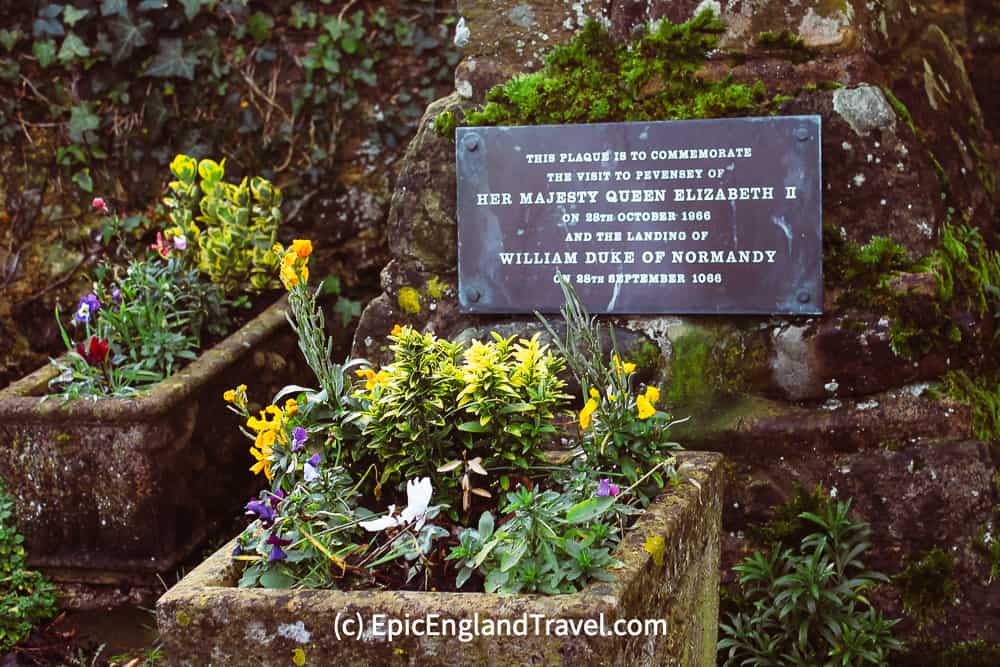
Why was Pevensey Castle built?
Landing in Pevensey Bay, castle building and a strong defence were part of William the Conqueror’s plan. The remains of the Roman fort shielded a wooden castle which would protect William’s rear flank as he advanced further into England to battle for his claim to the country.
When was Pevensey Castle built?
Pevensey Castle, the first Norman castle in England, was built as soon as William landed at the end of September 1066.
The famous Battle of Hastings in October 1066, often regarded as one of the most critical battles in English history, is merely 9 miles away from Pevensey Castle. William the Conqueror got his appellation changed from the less salubrious William the Bastard, and history was changed forever.
Norman Castles in England
Pevensey Castle is part of a rich heritage of Norman castles throughout the country that include mighty Dover Castle, the Tower of London, Windsor Castle, Warwick Castle and Alnwick Castle.
When William returned to Normandy in 1067 from Pevensey Harbor, the castle was left with his half-brother Robert, Count of Mortain.
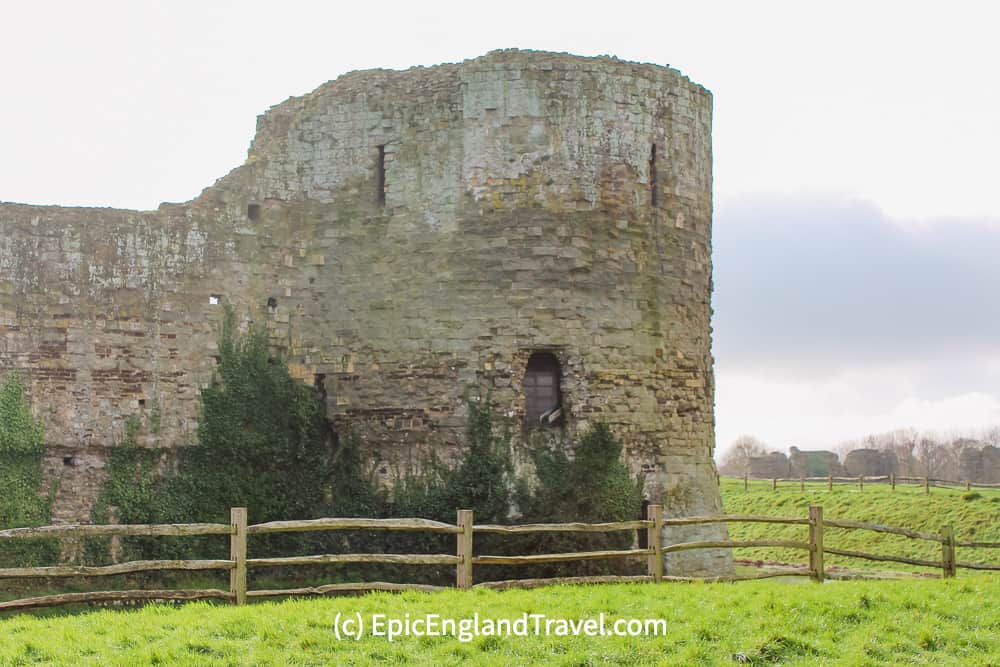
The wooden castle was rebuilt in stone by William’s son and 2/3 of the castle ruins are still visible today. Over the succeeding centuries, a number of noble families as well as Kings held Pevensey. The castle has withstood numerous battles, including the most prolonged siege in English history lasting from May 1264 to July 1265.
Pevensey today is merely a shell of its former self and, yet, it looms over the countryside. In its heyday, the castle must have been truly impressive with its large keep and gatehouse. Most of the keep is now destroyed. During World War II, American soldiers were garrisoned in some of the towers.
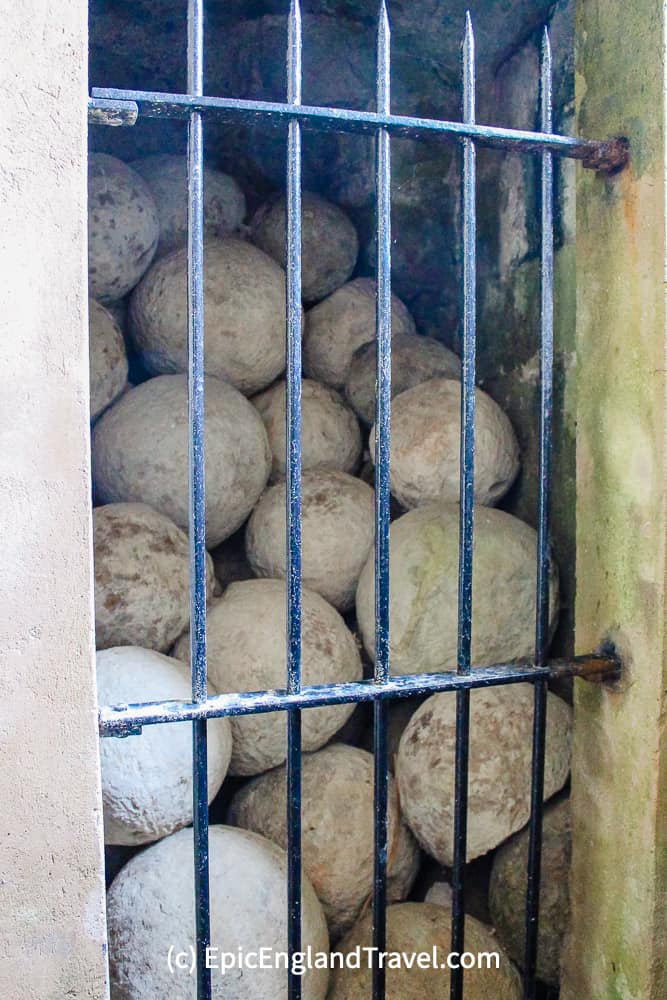
The castle’s history of violence and battles was finally brought to an end in 1925, when the-then owner, the Duke of Devonshire, gave it to the state as a historic landmark.
Pevensey Castle Ghosts
Like so many old places in England, this castle is also rumoured to be a haunted castle. The main Pevensey Castle ghosts seem to revolve around the lady in white which could be one of two historical figures in Pevensey Castle history – either Lady Joan Pelham who got stuck inside the castle during a siege or Queen Joan of Navarre, kept prisoner at the castle as a political pawn.

Pevensey Castle Facts
- Pevensey is unique in that it passed from Roman to Norman to English rule throughout its history.
- The castle covers a space of about 9.1 acres; you may be surprised by the size – from the entrance to the castle, you wouldn’t guess how big it is on the inside!
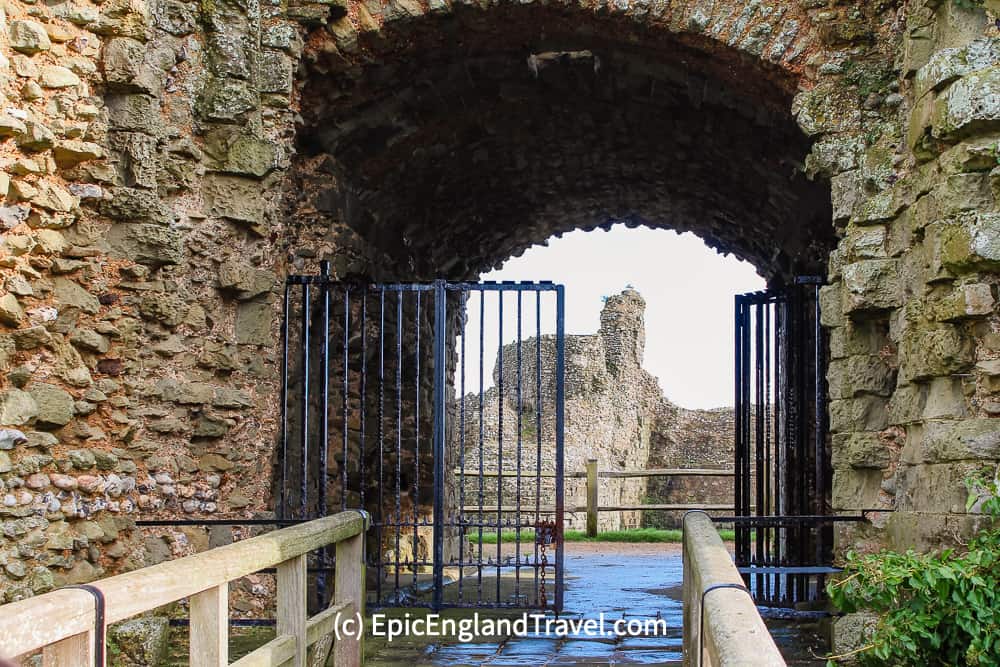
- The Castle was refortified in 1940 during World War II when there was a risk of German invasion. This was the last alteration made to the castle, and it has not been used in battle since then.
- When Pevenseywas first built, it was constructed from earth and wood. Only later was the structure replaced by the stonework still standing today.
- During your visit to Pevensey , make sure you get to see the Elizabethan catapult balls that have been preserved and are on display on the castle grounds. The castle has lots of these stone balls which were retrieved when the moat was drained. They were used in sieges during the middle ages.
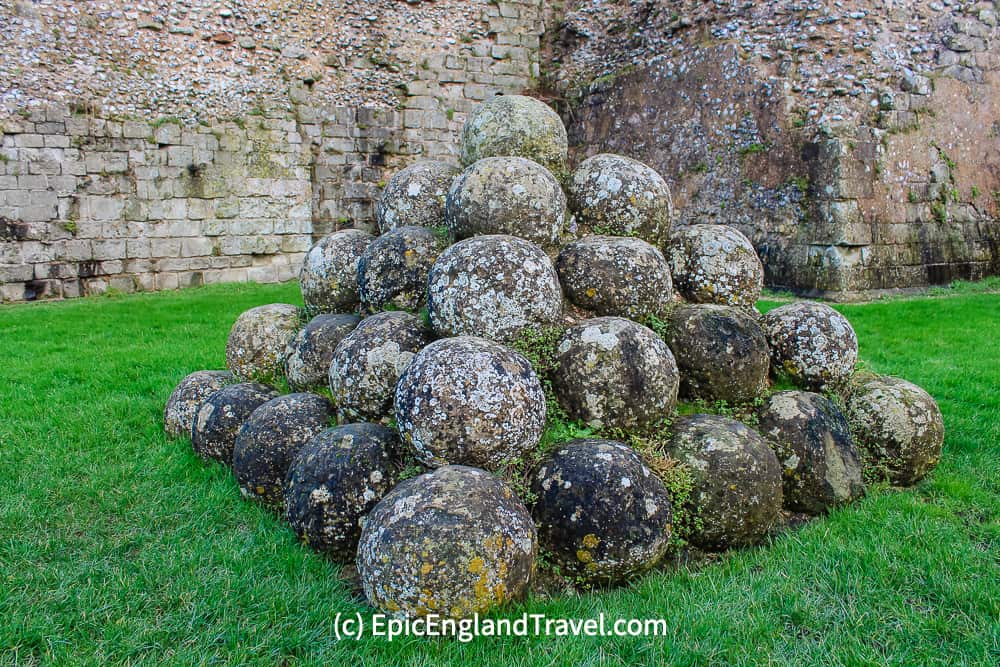
- Pevensey has a red cannon on site remaining from the times of Elizabeth I. Its twin is on show at the Tower of London.
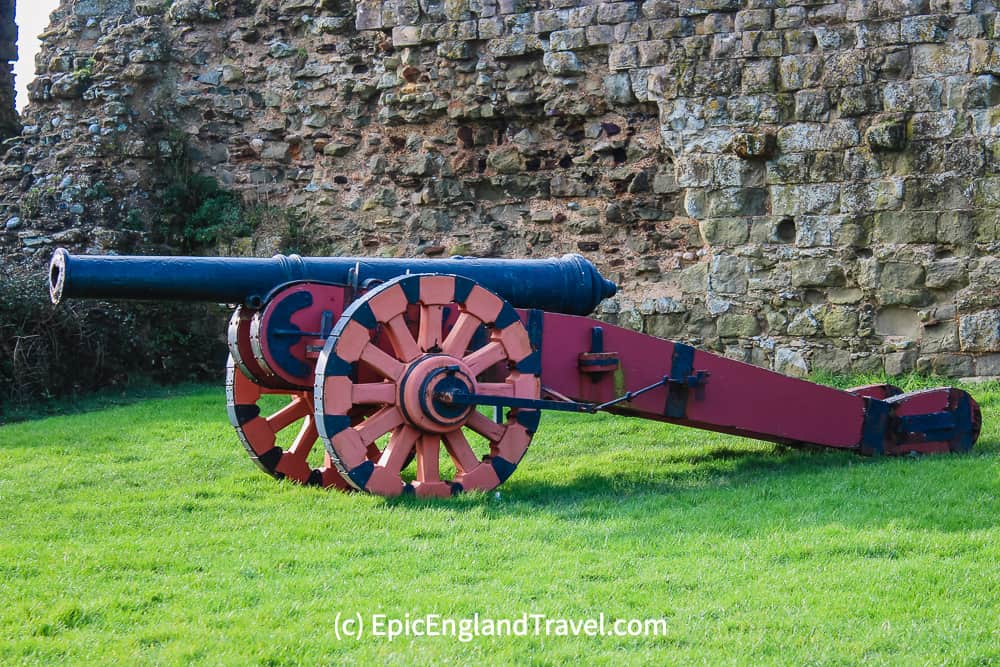
- The Pevensey Castle dungeon was a state prison in the 15th century. The castle has dungeons on each corner, dark and creepy and full of water. You can easily imagine how awful conditions were if you were a prisoner chained up in the dungeon.
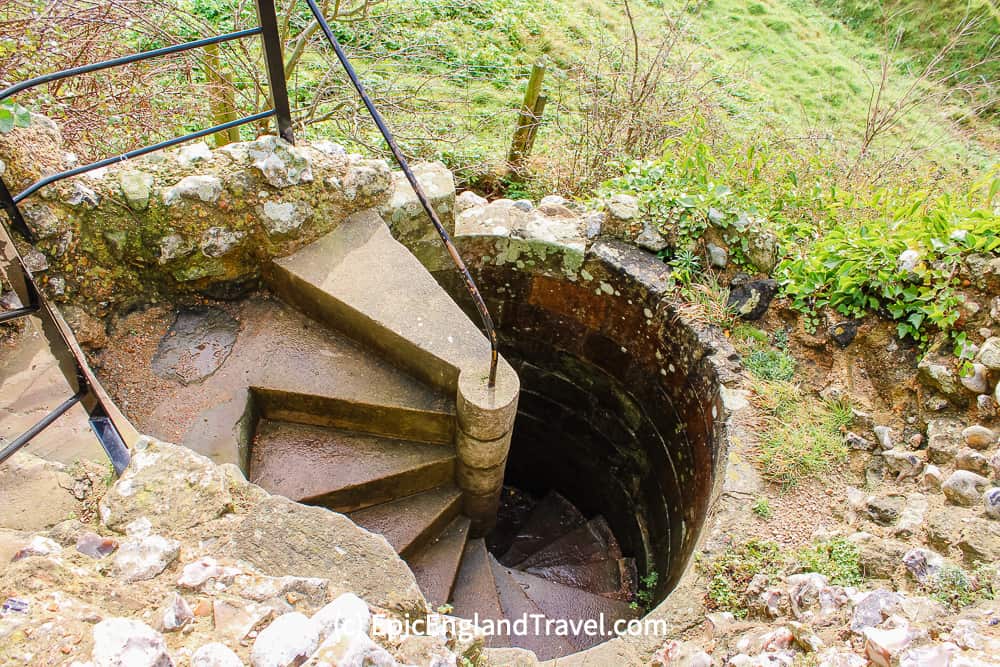
The Castle Inn Pevensey
Once you’re done touring the castle, you’ll probably require some refreshments. A great place to go is the Castle Inn of Pevensey Bay, located close to the castle grounds. This 16th century preserved building has been converted into a pub serving excellent traditional food and drinks in a rustic setting. As a Grade II listed building, you’ll be sitting within a historic landmark while enjoying your meal!
The Castle Inn is open seven days a week, and during the summer, there is a pleasant outdoor seating area where you can enjoy the sunshine and relax after visiting the castle.
On Saturday and Sunday afternoons and evenings, there is often live entertainment at the Castle Inn.
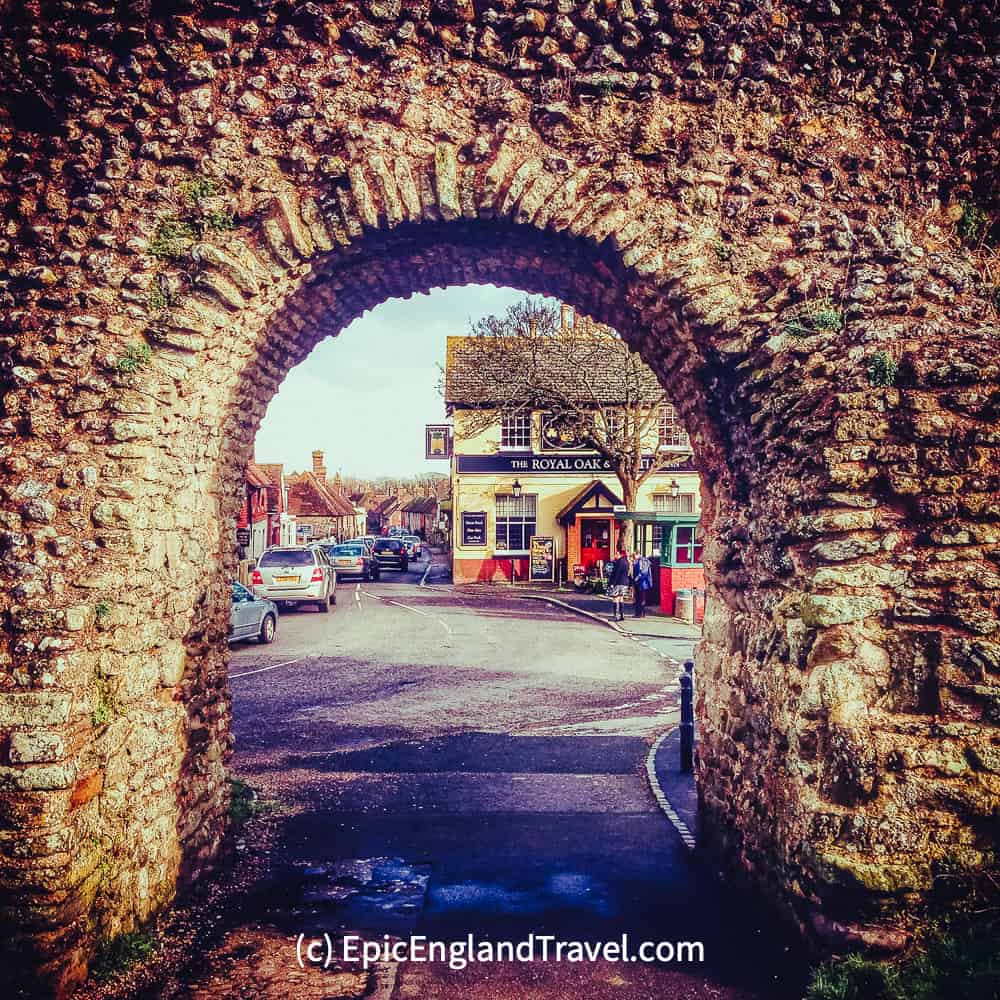
Pevensey the village is a charming English town. Although the church nearby, St. Nicolas Church is of Norman extraction, there has been a church on the site since Saxon times. The 16th century Pevensey Court House Museum is free to enter and has prison cells (in case you are not sufficiently creeped out by the Pevensey Castle dungeons). As mentioned, thanks to the silting up of the marshland, Pevensey Beach is about one mile away from the village.
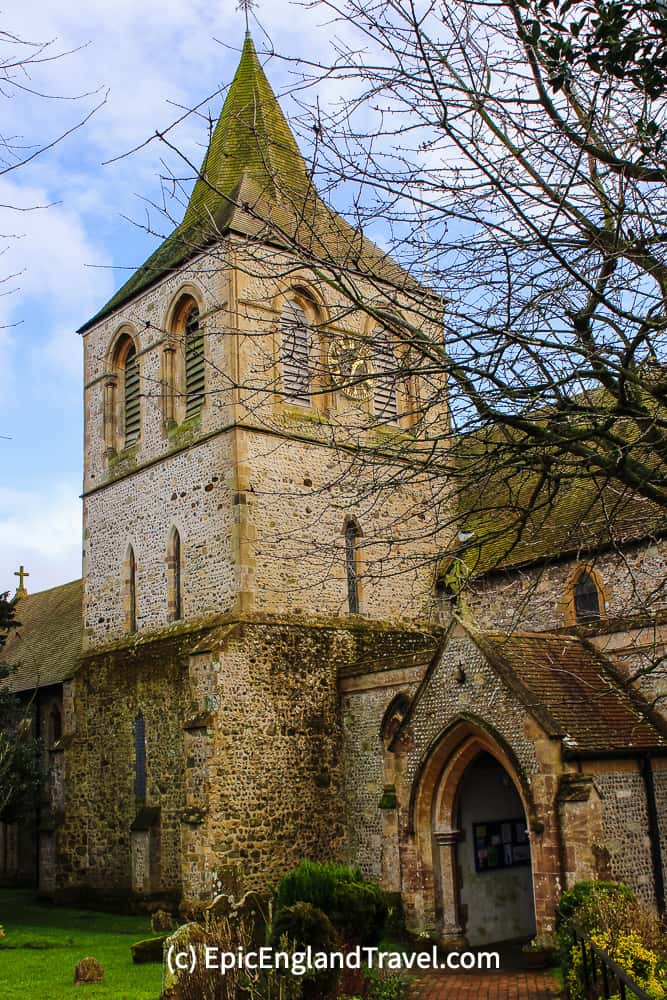
Visiting Information
Pevensey Castle is maintained by English Heritage and operates on the same ticketing system as other English Heritage sites. If you already have a membership, entrance to the castle is free, or you can purchase a one-time ticket as a non-member.
There are also special ticket options for families of up to three children, and an Overseas Visitor Pass, which is an excellent choice if you’re traveling internationally and hoping to do some castle hunting in England.
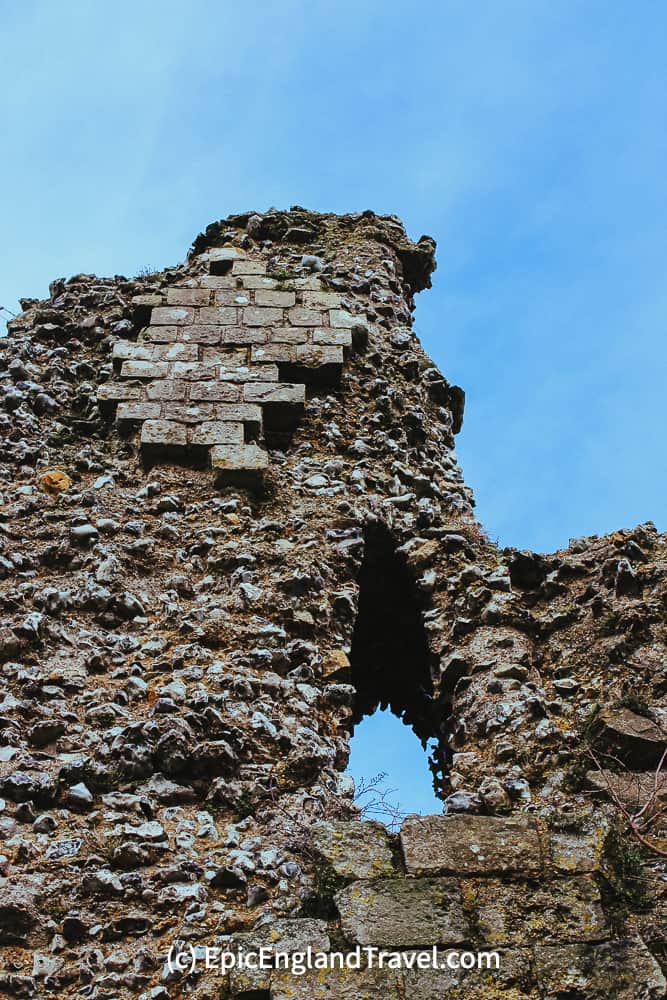
There are no guided tours of the castle available. However, if you’re interested in learning more details about the history and significance of Pevensey during your visit, you can purchase either the guidebook or the audio tour at the gift shop. We enjoyed using the audio guides which were really informative.
Although the English Heritage website indicates there is a shop on site, be aware the gift shop is tiny. Food and drink consists of some drinks in a mini fridge and a few candy bars. You are better off going to the The Castle Inn Pevensey for a snack.
The castle grounds are extensive and used by ramblers and dog walkers.
Pevensey is one of the harder castles outside London to reach by public transport. There is a direct train from London Victoria to Pevensey and Westham that takes 2 hours. Pevensey is a mile from the train station.
Pevensey Castle Opening Times
Pevensey Castle is typically open on Saturdays and Sundays, although this changes depending on the season, holidays, and events. The best way to plan your visit to Pevensey Castle is by checking the English Heritage website, which will have up-to-date information on ticket prices and opening times.
SPREAD THE WORD! PIN THIS TO YOUR TRAVEL PINTEREST BOARDS FOR FUTURE REFERENCE!
We did not receive compensation of any form, monetary or otherwise, from any of the products, services, hotels etc mentioned in this article.
This site generates income via partnerships with carefully-curated travel and lifestyle brands and/or purchases made through links to them at no extra cost to you. More information may be found on our Disclosure Policy.



